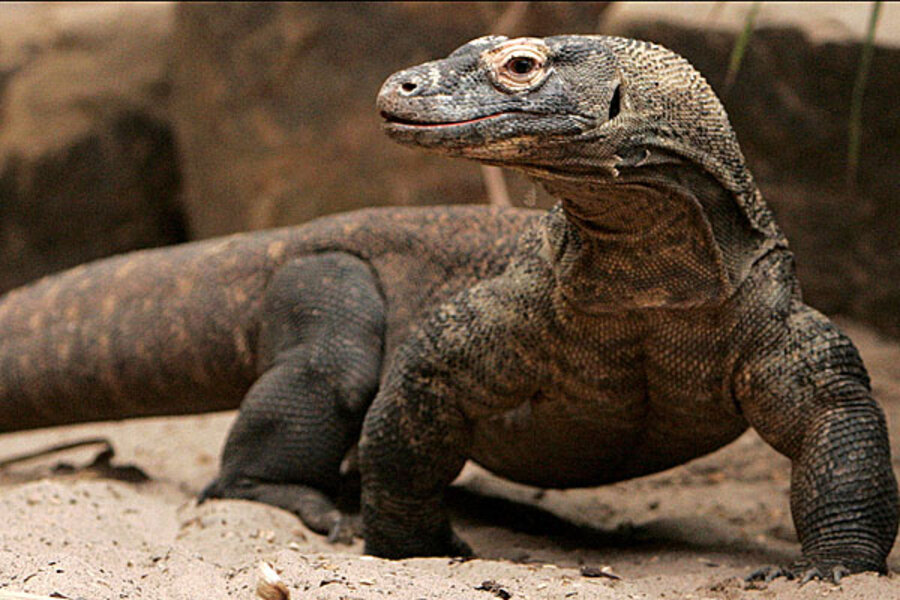Komodo dragon attack repelled by woman with a broom
Loading...
| Jakarta, Indonesia
An 83-year-old Indonesian woman has used a broom to fight off an attack from a Komodo dragon.
Komodo National Park official Heru Rudiharto says the 2-meter (6.5-foot) -long giant lizard bit the left hand of Haifha on Tuesday while she was near her house on Rinca island.
Haifha, who like many Indonesians uses only one name, hit the giant lizard's nose several times with a broom until it left go of her hand. Her neighbors heard her scream and drove the animal away. It took 20 stiches to repair Haifa's hand.
Endangered Komodo dragons are found in the wild in eastern Indonesia. They can grow longer than 3 meters (10 feet). Fewer than 4,000 are believed to be alive.
The Associated Press reports that attacks are rare. But they have occurred with more frequency in recent years.
All of the estimated 2,500 left in the wild can be found within the 700-square-mile (1,810-square-kilometer) Komodo National Park, mostly on its two largest islands, Komodo and Rinca. The lizards on neighboring Padar were wiped out in the 1980s when hunters killed their main prey, deer.
Though poaching is illegal, the sheer size of the park — and a shortage of rangers — makes it almost impossible to patrol, said Heru Rudiharto, a biologist and reptile expert. Villagers say the dragons are hungry and more aggressive toward humans because their food is being poached, though park officials are quick to disagree.
The giant lizards have always been dangerous, said Heru Rudiharto, a biologist and reptile expert. However tame they may appear, lounging beneath trees and gazing at the sea from white-sand beaches, they are fast, strong and deadly.
The animals are believed to have descended from a larger lizard on Indonesia's main island Java or Australia around 30,000 years ago.
Another species of monitor lizard, a close relative of the Komodo dragon, was recently discovered in Indonesia.
As reported by LiveScience.com, "The lizard, whose scientific name is Varanus obor, is also called by its popular names, Torch monitor and Sago monitor. It's called Torch monitor because of its bright orange head with a glossy black body. "Obor" means torch in Indonesian.
The newfound lizard is a close relative of the intimidating Komodo dragon, as well as the fruit-eating monitor lizard recently reported from the Philippines."
Copyright 2013 The Associated Press.







